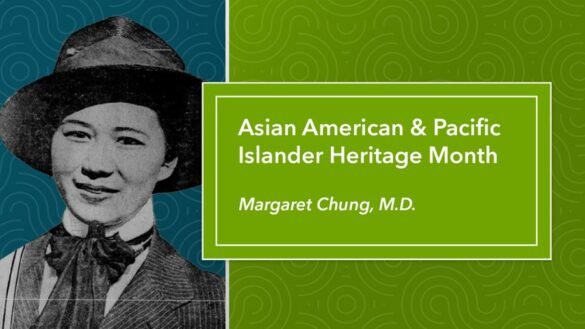Table of Contents
Born into a devout Christian family, Margaret Chung worked to support her siblings and care for her mother who suffered from tuberculosis. She won a scholarship that allowed her to attend medical school where she was the only woman and person of color in her graduating class.
After a stint in Chicago where she completed internships and residencies, Chung returned to California where she opened a private practice and became famous for treating Hollywood celebrities.
Her Life
Chung, who grew up poor and worked on a ranch to support her family before deciding to pursue medical studies, had the drive of someone whose life had been profoundly impacted by illness. After finishing medical school she worked as a nurse, intern and resident in Los Angeles and Chicago before becoming a surgeon at Santa Fe Railroad Hospital in 1919, where she learned to use plastic surgery techniques on workers injured by industrial accidents. She then opened her own practice in San Francisco’s Chinatown, which served a diverse clientele including Hollywood celebrities.
After Japan invaded China in 1930, she organized “rice bowl” parties and raised money for the Chinese war effort. During World War II she befriended some military pilots, who she referred to as her adopted sons. She invited them to weekly dinners and sent them care packages and daily letters, which helped keep their spirits up while serving overseas. By the end of World War II she had over 1,500 “sons.”
Although conservative in her medical approach, Chung was a thoroughly modern woman who drank in speakeasys and hung out with a glamorous crowd that included actresses Tallulah Bankhead and Sophie Tucker. She also had intimate relationships with women, such as writer and lesbian activist Elsa Gidlow. These aspects of her personal life prompted scandalous rumors of her sexuality, which she never confirmed or denied.
Her Career
After graduation from medical school, Chung was eager to practice in the United States. However, she was barred from residencies and internships in American hospitals due to her race and gender. She instead opened a clinic in Chinatown in 1922. She found many Chinese patients were skeptical of Western medicine, and even more suspicious of a woman doctor who dressed in masculine clothing. She worked to overcome this by promoting her work in mainstream women’s organizations.
In the 1920s, Chung became more accepted by Chinatown residents and gained a reputation as an expert in treating women. She even made it into the 1928-1929 edition of Who’s Who in California, indicating that she achieved some degree of professional stability and social status.
By the 1930s, Chung was a renowned surgeon, specializing in gynecology and obstetrics. She also treated a variety of celebrities and touring musicians, including the actress Mary Pickford.
During World War II, “Mom” Chung lobbied for legislation to establish WAVES—Women Accepted for Volunteer Emergency Services—a reserve corps in the Navy. Though she was rejected from WAVES due to her age and rumors of her sexuality, she helped pave the way for women to join the military. She died in 1959. She is commemorated with a plaque on Chicago’s Legacy Walk, an outdoor public display that celebrates LGBTQ history and people.
Her Personal Life
Chung was not afraid to break barriers and challenge the status quo. She sold newspapers, worked in a cafeteria and won speech contests to pay her way through medical school. She was also a pioneer in supporting Chinese American causes.
Chung moved to San Francisco’s Chinatown in the early 1920s, where she opened a private practice and sought to introduce Western medicine to local residents. But it was not easy to gain the community’s trust. Her use of masculine dress and her intimate relationships with women, including the author Elsa Gidlow and entertainer Sophie Tucker, fueled rumors about her sexuality. Though she never confirmed or denied the rumors, they were so persistent that some patients stopped seeing her.
Despite the challenges, she soon established a solid reputation in the city and became an important leader in the Chinese American community. She was a member of the Women’s City Club and the Medical Women’s Society. She also helped establish the first Chinese hospital in the United States, and she led its gynecology and obstetrics department.
During World War II, she pushed for the inclusion of women in the military. She organized “rice bowl parties” in over 700 cities to raise money for the Chinese war effort. She also forged close ties with military pilots, whom she called her “boys.” She hosted weekly dinners for them and sent them care packages and letters.
Her Legacy
When she returned to California after medical school, Chung was determined to help change healthcare in Chinatown. Using money she earned by selling newspaper subscriptions, she established one of the first Western hospitals in the area. She also developed a private practice, where she treated Hollywood celebrities and worked on industrial accident cases that led to her expertise in plastic surgery.
Despite being shunned by some of her older patients, Chung became a popular figure among locals and visitors alike. A single woman who dressed in masculine clothing, Chung was a rebel against the expectations of her time. She had close friendships—and possibly intimate relationships—with women like the lesbian poet Elsa Gidlow and vaudeville performer Sophie Tucker. She frequented the bars, speakeasys and cafés that were the center of the city’s emerging queer community.
A dedicated patriot, when World War II broke out, Chung used her fame to support the Allied war effort in both China and America. She held “rice bowl parties” to raise funds in hundreds of cities and hosted large weekly dinners for her “boys” in the military, many of whom she recruited as pilots for the Flying Tigers squadrons that defended China against Japan.
Chung remained active until her death on January 5, 1959. Her legacy continues to impact the lives of many.

